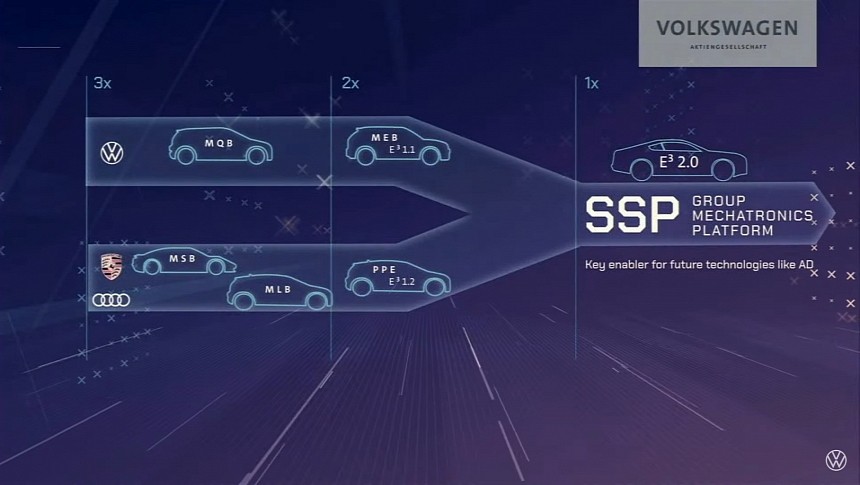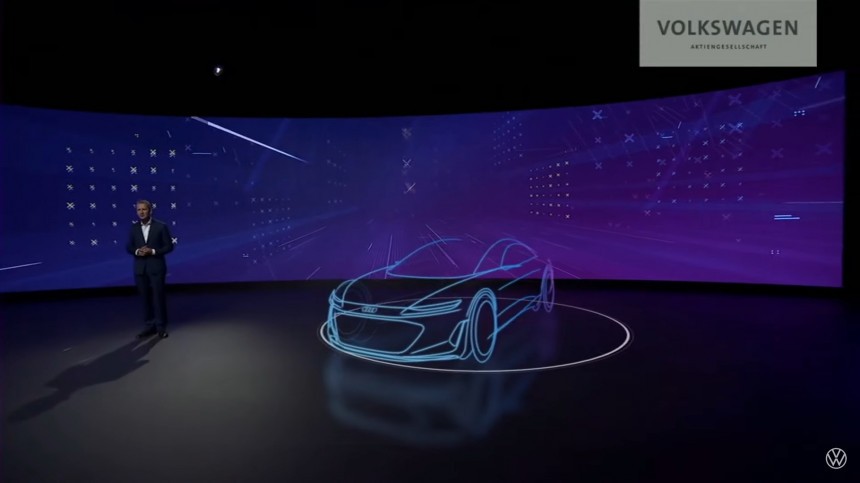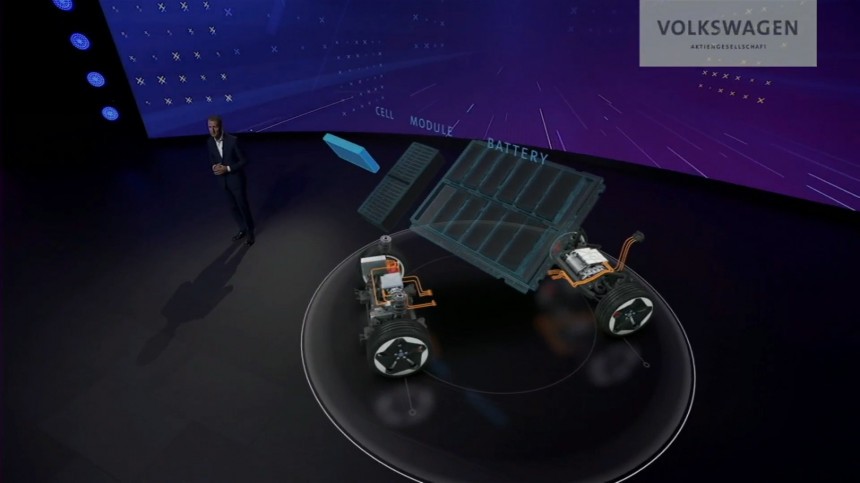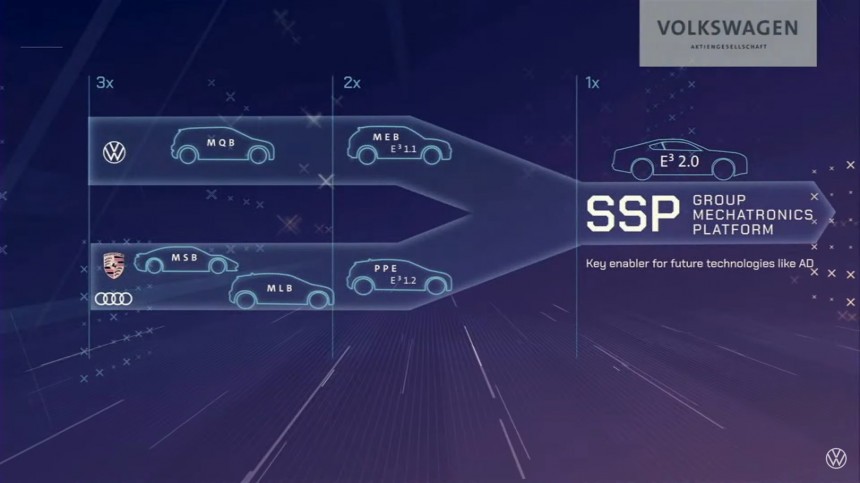Anyone following Volkswagen may feel the urge to tell the company to make up its mind. In 2021, it was optimistic about delivering the first car with the Scalable Systems Platform (SSP) in 2026. When Oliver Blume became the VW Group's CEO to replace Herbert Diess, the new architecture was postponed to 2028 or 2029. On Volkswagen Capital Markets Day, the executive said the SSP will premiere in 2026 and will be able to handle 1,700 hp BEVs.
What made the company change its mind and cancel the postponement? Good question. Last November, Autocar talked to Thomas Schäfer, and the Volkswagen Passenger Cars CEO said the plan to build a new factory just for the SSP had been abandoned. The German carmaker would construct the new plant in Wolfsburg, which was symbolic of how important Project Trinity was. However, the reason for having a new facility for the first SSP BEV was that all four facilities there would still be hectically making cars powered by internal combustion engines (ICE) by 2026.
Schäfer argued that if the SSP and Project Trinity could wait until 2028 or 2029, one of the four factories in Wolfsburg could start making the new battery electric vehicle (BEV). Theoretically, the Trinity was supposed to be innovative, demanding a completely new manufacturing concept and possibly a factory conceived to make it happen, not adapted to the task. In other words, something built from the ground up to be groundbreaking, not an old, retooled factory.
Back to the Volkswagen Capital Markets Day, Blume said the SSP would underpin from city cars to hypercars with up to 1,700 hp. According to Autocar, the previous output limit for the new architecture was 1,100 hp. Although the vehicle platform is the same, the Volkswagen Group divided responsibilities for some segments between its family members.
The company's leading brand will develop modules and components for superminis and city cars. Skoda, Cupra, and Audi will use the same parts Volkswagen will create for these vehicles. Did you notice that Seat was not mentioned? That somehow confirms the rumors that the Spanish volume brand is destined to disappear. Cupra should take its place.
Audi will be in charge of creating the SSP elements for compact and mid-sized vehicles. These platform components will also be used by Porsche, Skoda, and Volkswagen. Weirdly, Cupra is not included, and we have no idea why – especially considering how successful the Formentor is. For large car modules, Porsche will be the leader, developing elements that Audi, Bentley, and Lamborghini will also use. With a BEV that may reach 1,700 hp, it would not be strange if Bugatti and Rimac also wanted to use the SSP, but they will probably follow a unique path.
Blume said that SSP cars would be able to fast charge from 10% to 80% of capacity in 12 minutes. No battery currently available can deliver that. Curiously, QuantumScape promised its solid-state cells would charge from 10% to 90% in 12 minutes when they entered production by 2024 or 2025. Considering Volkswagen is a major investor in the American solid-state battery startup, these dots deserved to be connected. MEB vehicles charge from 10% to 80% in 35 minutes – with adequate fast chargers.
The Volkswagen Group CEO also shared something really interesting in his speech. According to him, "architectures cover up to 75% of all material costs for BEVs," while they only respond to 10% of these costs in ICE vehicles. What he did not elaborate on is that the only explanation for such a high-cost percentage is that the battery pack is considered part of the platform. If it does not last as much as the car, its failure represents the death of the vehicle. Blume expects that the SSP will make electric cars profitable for the Volkswagen Group, something the MEB models did not manage to offer consistently. Curiously, he only said that "most" SSP models should achieve profit margin parity with ICE cars.
Before the SSP retires the MEB and the Premium Platform Electric (PPE), Volkswagen will present the evolutions of these electric platforms. The MEB+ will offer better charging times. Instead of 35 minutes, the process will require 21 minutes. Blume did not go deeper into what changes, but it may have to do with the unified cells Volkswagen is developing. The revised architecture will arrive in 2025.
Regarding the PPE evolution, it apparently did not receive any special designation. Currently used in the Audi e-tron GT and the Porsche Taycan, it will also be part of the Porsche e-Macan and the Q6 e-tron. The A7 e-tron and A7 Avant e-tron – previously known as A6 – also use PPE, but it could be the old version of the electric architecture. We'll only know for sure when these vehicles are introduced or in another event where Volkswagen executives spill the beans – and do not change their minds, mind you.
Schäfer argued that if the SSP and Project Trinity could wait until 2028 or 2029, one of the four factories in Wolfsburg could start making the new battery electric vehicle (BEV). Theoretically, the Trinity was supposed to be innovative, demanding a completely new manufacturing concept and possibly a factory conceived to make it happen, not adapted to the task. In other words, something built from the ground up to be groundbreaking, not an old, retooled factory.
The company's leading brand will develop modules and components for superminis and city cars. Skoda, Cupra, and Audi will use the same parts Volkswagen will create for these vehicles. Did you notice that Seat was not mentioned? That somehow confirms the rumors that the Spanish volume brand is destined to disappear. Cupra should take its place.
Blume said that SSP cars would be able to fast charge from 10% to 80% of capacity in 12 minutes. No battery currently available can deliver that. Curiously, QuantumScape promised its solid-state cells would charge from 10% to 90% in 12 minutes when they entered production by 2024 or 2025. Considering Volkswagen is a major investor in the American solid-state battery startup, these dots deserved to be connected. MEB vehicles charge from 10% to 80% in 35 minutes – with adequate fast chargers.
Before the SSP retires the MEB and the Premium Platform Electric (PPE), Volkswagen will present the evolutions of these electric platforms. The MEB+ will offer better charging times. Instead of 35 minutes, the process will require 21 minutes. Blume did not go deeper into what changes, but it may have to do with the unified cells Volkswagen is developing. The revised architecture will arrive in 2025.
Regarding the PPE evolution, it apparently did not receive any special designation. Currently used in the Audi e-tron GT and the Porsche Taycan, it will also be part of the Porsche e-Macan and the Q6 e-tron. The A7 e-tron and A7 Avant e-tron – previously known as A6 – also use PPE, but it could be the old version of the electric architecture. We'll only know for sure when these vehicles are introduced or in another event where Volkswagen executives spill the beans – and do not change their minds, mind you.

















